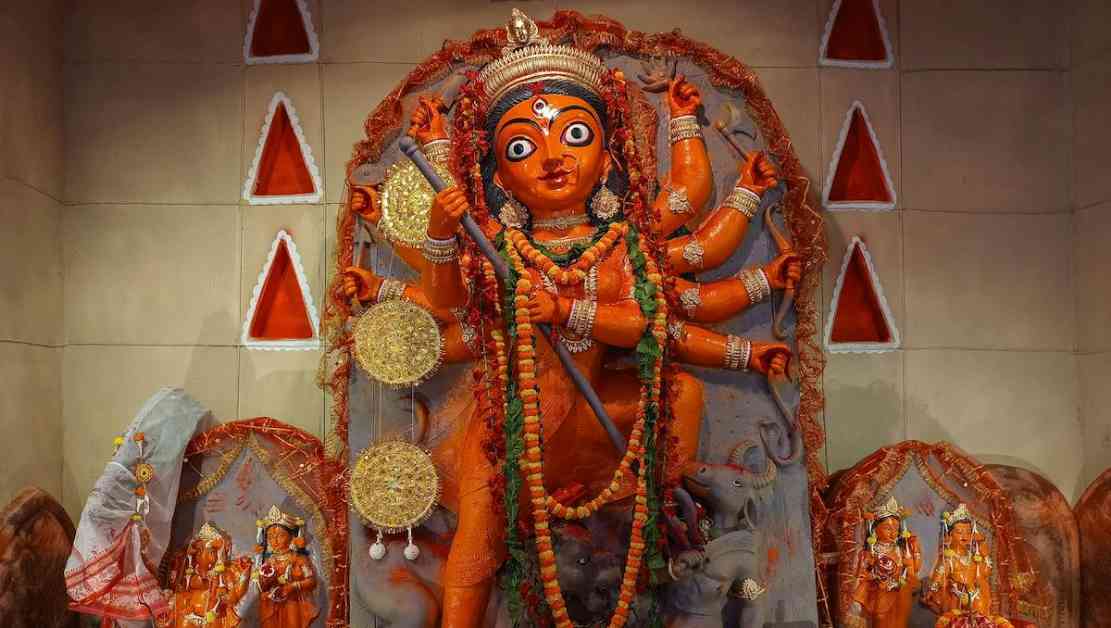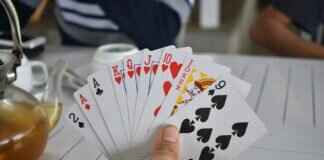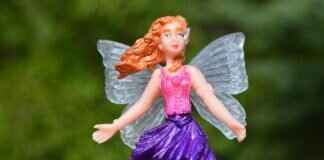Growing up, many Bengali children may not have known about the significance of Nabapatrika. For those raised in aristocratic families with long-standing Durga Puja traditions, Nabapatrika may have been familiar. However, for most children filled with festive fervor, the focus was on the Kola Bou. The Kola Bou is a Banana plant that is ceremoniously dipped in the sacred Ganga or a local water body, wrapped in a red and white saree, and placed beside Lord Ganesha to represent his wife consort. But there is much more to this tradition than meets the eye.
Nabapatrika, which means “nine leaves” in Bengali, is a unique ritual that involves the worship of nine different plants collectively known as Nabapatrika. This ritual holds a special place in the hearts of the Bengali community as it symbolizes the essence of Durgotsav and marks the beginning of the Durga Puja festivities. It embodies both the religious and cultural significance of this vibrant celebration.
According to Subrata Bhattacharya, the lead priest at Central Noida Pujo Committee, Durgotsav coincides with the harvest season, signifying a time of health, wealth, and prosperity. The Nabapatrika ritual is a blend of various beliefs, myths, and rituals associated with Durga Puja. It involves gathering nine different plants, tying them together with a sacred thread, bathing them in holy water, and offering them various puja items like flowers, fruits, sweets, and incense sticks.
The heart of the Nabapatrika ritual lies in the belief that Goddess Durga returns to her parental home on Earth from her bridal abode in Mount Kailash, accompanied by her children—Ganesh, Kartik, Lakshmi, and Sarasvati. Each of the nine plants used in the ritual represents a form of Goddess Durga, with specific plants assigned to each form.
On the morning of Saptami, the seventh day of the festival, Goddess Durga is invoked in the Nabapatrika, which is tied to the twigs of the white Aparajita plant with a yellow thread. The plants are then given a ceremonial bath in river or pond water, adorned in a red-bordered white sari, and worshipped with reverence. The Nabapatrika is placed on a decorated pedestal and positioned on the right side of Lord Ganesh, earning the title of Kolabou or Ganesh’s wife.
A folktale surrounding the Kola Bou recounts a wedding procession where Ganesh, upon returning home, found his mother, Durga, eating rice. When Ganesh inquired about the abundance of food, Durga playfully mentioned that his wife did not feed her enough. This led to Ganesh marrying a banana tree, thus giving rise to the Kola Bou tradition.
While there are no explicit references to Nabapatrika in ancient texts like the Vedas or Puranas, it has become an integral part of Durga Puja, showcasing inclusiveness and the synthesis of diverse cultural practices. Scholars interpret Nabapatrika as a manifestation of Durga herself, symbolizing nature in its vegetative form and representing Durga’s restoration of order and abundance to the earth.
As the Durga Puja celebrations culminate on Dashami, the final day of the festival, the Kola Bou is dismantled and immersed with utmost respect in a secluded ceremony. This practice holds significance as the Kola Bou represents Ma Durga herself, and her untying and unveiling must be conducted with reverence before the immersion of the idol takes place.
In essence, the Nabapatrika and Kola Bou traditions in Durga Puja are not just rituals but symbolic representations of the divine, nature, and the cyclical rhythm of life. They add depth and meaning to the festivities, connecting the community with their cultural roots and spiritual beliefs in a harmonious celebration of faith and tradition.














